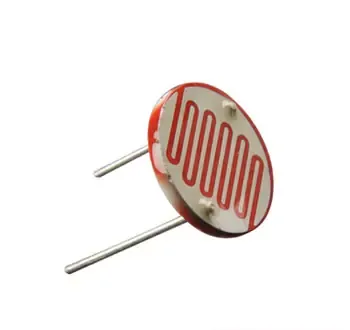LDR(Light Dependent Resistor)
In the world of electronics, there's a little-known hero called the Light Dependent Resistor (LDR). It might sound like a mouthful, but fear not! Understanding how an LDR works is easier than you might think.
Imagine you have a tiny spy in your electronics, a spy that can sense light levels. That's essentially what an LDR does. But instead of using secret agents, it relies on a nifty trick involving its special properties.
Here's the working: LDRs are made of a semiconductor material that changes its resistance based on the amount of light hitting it. When light hits the LDR, it excites electrons within the semiconductor, allowing them to flow more freely. This lowered resistance allows electricity to pass through more easily. Conversely, when it's dark, there's less excitement among the electrons, causing the resistance to increase and limiting the flow of electricity, LDR is also called as photoresistor.
Let's put this into perspective with a real-life example. Ever noticed how So, the next time you see a streetlight flicker on at dusk, remember the humble LDR silently doing its job. It's a small component with a big impact, reminding us that even in the world of electronics, sometimes, the simplest solutions are the most ingenious.
But wait, there's more! LDRs aren't just for streetlights; they're also found in cameras, solar panels, and even in your garden lights. They're the unsung heroes working behind the scenes, ensuring our devices respond to changes in light seamlessly.
So, the next time you see a streetlight flicker on at dusk, remember the humble LDR silently doing its job. It's a small component with a big impact, reminding us that even in the world of electronics, sometimes, the simplest solutions are the most ingenious.
do you want to know about what is a dark sensor, Light sensor and how to implement them through LDR let see it in next post untill than stay tuned to electrotalks




